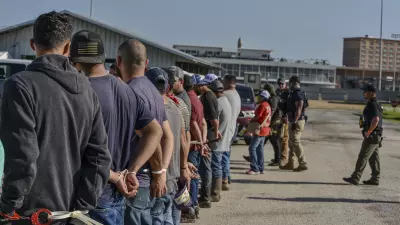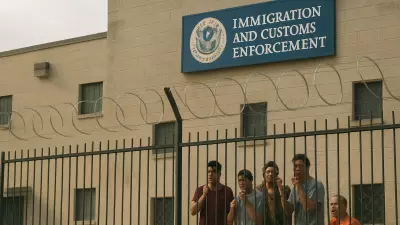Pittsburgh, like a lot of Postindustrial places, is banking on growth. It needs growth to fuel opportunity; it needs growth to pay for equity; and it needs growth to support the rising cost of public services, education, and health care. Pittsburgh needs population growth. Pittsburgh needs income growth. Pittsburgh needs job growth.

But Pittsburgh is not growing. Pittsburgh is shrinking — shrinking much more slowly than before, but shrinking nonetheless. The city’s 2020 population declined modestly relative to 2010 and is perilously close to falling below a key threshold of 300,000 people. Gross domestic product for the Pittsburgh region grew by a paltry 2.1 percent in 2018-19; Allegheny County’s GDP grew by only 1.8 percent.
Fully one-third of everyone employed in Allegheny County works in education or in health care. Those are critical sectors both to the region’s quality of life and to whatever national or global celebrity Pittsburgh enjoys. But their continued prominence shows that the much-heralded “tech solution” to the region’s economic sluggishness not only has yet to arrive, it has yet to appear on the horizon.
Since Pittsburgh doesn’t appear to be ready to give up on growth, is there a viable growth strategy or two to offer?
My answer is: Look to the suburbs, but not in the way that Pittsburgh has looked to the suburbs before.
Going back decades, the City of Pittsburgh has expanded simply by acquiring neighboring communities. Is that a growth option for Pittsburgh today? The last major acquisition, the annexation of Allegheny City in 1907, was so politically controversial that it still rankles some residents of Pittsburgh’s North Side.
Annexation is still a hot potato.
Pittsburgh City Council recently voted down a proposal to annex the adjacent Borough of Wilkinsburg, although a possible future merger is still on the table. Many in Wilkinsburg value the borough’s independence and disparage the city of Pittsburgh’s purported noblesse oblige.
But Pittsburgh is not growing. Pittsburgh is shrinking — shrinking much more slowly than before, but shrinking nonetheless.
From the department of “If you can’t join them, beat them,” proposals to bulk up Pittsburgh’s finances by instituting a “commuter tax” on suburban residents who work in the city of Pittsburgh have surfaced from time to time. They have never come to meaningful fruition, and nothing in that equation looks likely to change. The financial picture is more complicated than either supporters or opponents suppose. The only sure thing in this debate is that the stakes have been jumbled by the growth of remote work amid the COVID-19 pandemic.
Good old-fashioned political collaboration, not to mention outright political integration, seems as unlikely as ever. Both in the city and across the region, Pittsburgh is notoriously fragmented when it comes to municipal authorities and government authorities of all sorts.
In interesting ways, that fragmentation has gotten worse in recent decades, rather than better. The identities of Pittsburgh’s famous 90 neighborhoods are largely fixed in place as a result of well-intended community organizing efforts from the 1970s.
Instead, Pittsburgh’s suburbs matter to growth in the same way that the old joke wonders about the number of psychiatrists that it takes to change a light bulb. It only takes one to do it, but the light bulb has to want to change. The residents of Pittsburgh’s suburbs have to choose to care about the region’s interests as much as they care about their own township, borough, or municipality — and maybe more.
That’s a tall order. Why? Some history is important.
Pittsburgh’s suburbs fall into one of two broad categories.
One is towns that were founded during the 1800s and grew to maturity and success before World War II, based initially on rail access and later via the automobile. Wilkinsburg is one of these. Each of these places was distinctive in its own way, but they generally had their own business districts, police and fire companies, and community identities. Some of them are still thriving today (Sewickley, Mt. Lebanon); some have fallen on hard times (Wilkinsburg). The key to this history, though, is that no matter its specific economic trajectory, each of these suburbs retains a meaningful local identity as a place, almost entirely independent of its geographical proximity to Pittsburgh.
Two is post-World War II towns, mostly built by real estate developers plopping down rows of houses and central shopping malls amid former farmland, to take advantage of cheap credit for homebuyers and an abundance of automobiles. These places generally didn’t have business districts or community identities in any meaningful respect, aside from residents’ shared interests in the successes of their schools — and their high school football teams. The key to this history is that without a planned physical hub anchoring their centers, each of these places lacks the core place-specific identities of their older neighbors. They’re addresses, tax rates, and shared schools.
My answer is: Look to the suburbs, but not in the way that Pittsburgh has looked to the suburbs before.
That classification skips over some important details, but for now, it leads to this simple hypothesis: The first group of suburbs and the second group of suburbs resist growth-oriented regional collaboration for entirely different reasons. Residents of the first group retain some residual (and sometimes not so residual) independence that banks on their not being Pittsburghers, at least not fully. Residents of the second group may be deeply committed to neighborhoods, families, and high schools, but not to places of any sort, least of all a town. They may not identify as Pittsburghers at all.
Since that paints a bleak picture for the future of growth-oriented regionalism, I’ll close with a note of optimism. There is one trans-regional institution in Western Pennsylvania that does more than any other to bring people together under a collective banner of Pittsburgh-related interest and ambition. How dare I say that anyone in southwestern Pennsylvania isn’t a Pittsburgher? Not Pittsburghers?! Not coincidentally, perhaps, it is the one institution in Pittsburgh that, for nearly five decades, has striven consistently to be the absolute best in its industry, nationally.
The Pittsburgh Steelers.
I don’t know exactly how or why the Steelers have been able to attract and retain such a broad swath of community enthusiasm since the early 1970s. (There’s a theory that it originated in the rise of the team during the fall of the steel industry, but that’s wrong; the timeline is off.) It’s not the link to the black-and- gold color scheme; it’s not the attachment to the steel industry. It’s not just football; it’s not just sports fans.
Maybe modern Steelers fandom is a peculiar kind of nostalgia. But I’m betting otherwise. If I were inclined to figure out how to get Pittsburgh suburbanites to put aside a little of their localism and sign on to a larger regional agenda for Pittsburgh growth, I’d hire an anthropologist or two and figure out what makes Steelers Nation tick. Because the team is marginal in the scheme of Pittsburgh’s economy, but it’s huge in Pittsburgh’s collective psyche, no matter where any Pittsburgher lives and no matter even whether current residents were born in Pittsburgh.
That fan base has something to teach the people trying to get local governments to cooperate.







